Complete Process for Oak Pellet Fuel Production Line
Oak is a dense hardwood with tightly packed fibers and a high lignin content, which gives it excellent pelletizing properties. Pellets made from oak burn efficiently with low emissions. They are widely used for home heating, commercial boilers, and industrial power generation.
Thanks to their reliable performance and solid forming characteristics, oak pellets show strong growth potential in the global market. More investors are showing interest, and the market size is projected to reach $10.63 billion by 2033.
However, due to the high density of oak, stable pellet production requires more precise processing steps and well-matched equipment.
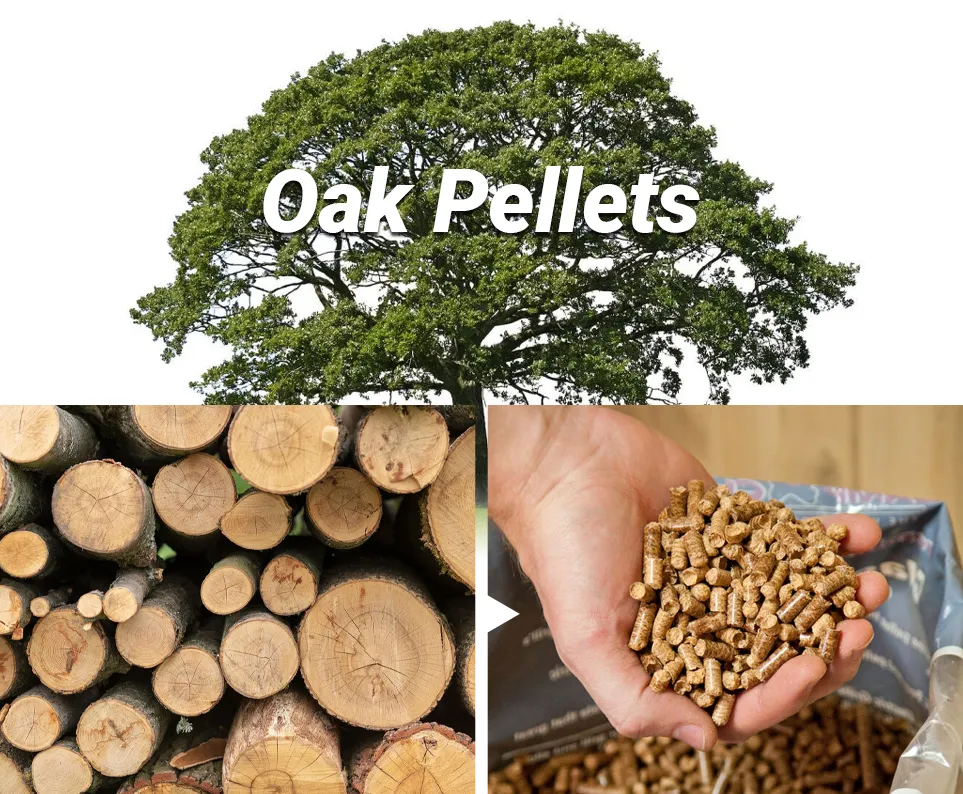
Process Overview for Oak Pellet Production
Producing oak pellets involves several key processing steps. A typical production line includes the following seven stages:
1.Raw Material Preparation
Oak feedstock comes from various sources, so it must be pre-treated before grinding. This step removes impurities and sorts the material for further processing.
The first task is to clean up logs or leftover wood from sawmills, removing sand, stones, and metal scraps. A drum screen is commonly used to filter out hard debris, while a permanent magnetic separator removes nails and wires to protect the equipment and reduce fire risks.
Large-scale production lines that use whole logs typically add both a debarker and a wood chipper. The debarker strips off the high-ash bark. The chipper cuts logs or branches into uniform chips to support efficient downstream processing.

2.Crushing
Crushing reduces raw materials to a size suitable for pelletizing. If the particles are too large, they won't compress well. If they're too fine, energy use goes up and the powder may overheat, making production unstable. For oak, a particle size of 2–4 mm usually works best.
Crushing methods vary depending on the material's shape and the production scale.
In small to medium-sized lines (≤2t/h), wood chips measuring 15–30 mm can be crushed directly using a high-speed hammer mill. The final particle size depends on the screen size. This setup is simple to operate, compact, and well-suited to small or mid-scale production.
In larger lines (≥3t/h), wood chips are usually 20–50 mm in size. To reduce energy use and protect the blades, a two-stage process is often used. This includes coarse crushing followed by fine crushing.
Crushers are often paired with a fan, cyclone separator, and pulse dust collector. This combination improves powder collection and screening while helping to prevent blockages and dust explosions.
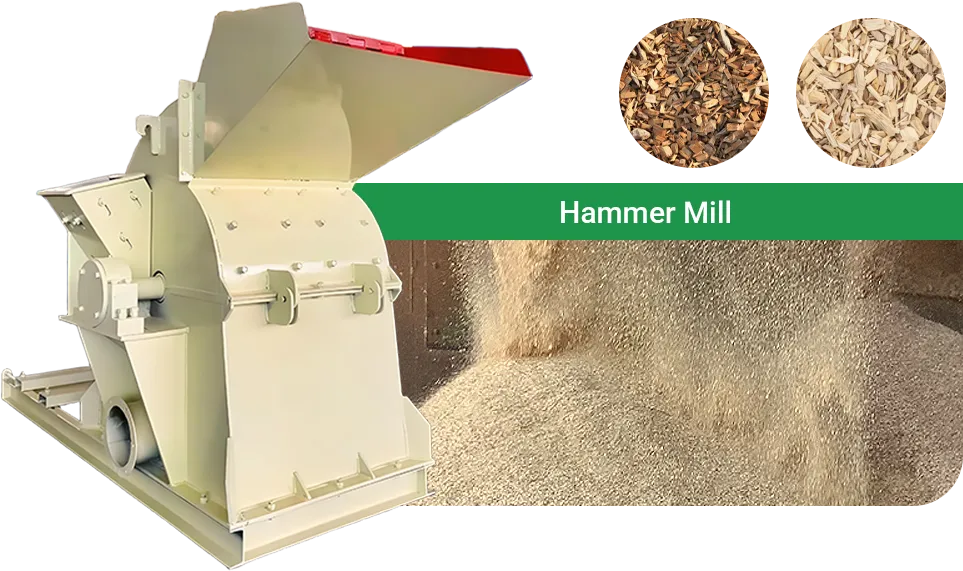
3.Drying
Oak materials often contain high moisture, but pelletizing requires a controlled range. If the material is too wet, pellets become loose and hard to form, affecting output stability. If it's too dry, the material won't bind well and can cause more wear on the equipment. The ideal moisture level is usually between 10% and 12%.
Medium and large-scale lines typically use a rotary dryer, which handles larger volumes with high efficiency. Smaller operations often prefer an airflow dryer. It's compact, cost-effective, and suitable for small-batch production.
To reduce dust during drying, the system is often paired with a cyclone separator or a pulse dust collector. These devices help clean the exhaust and keep emissions within environmental limits.
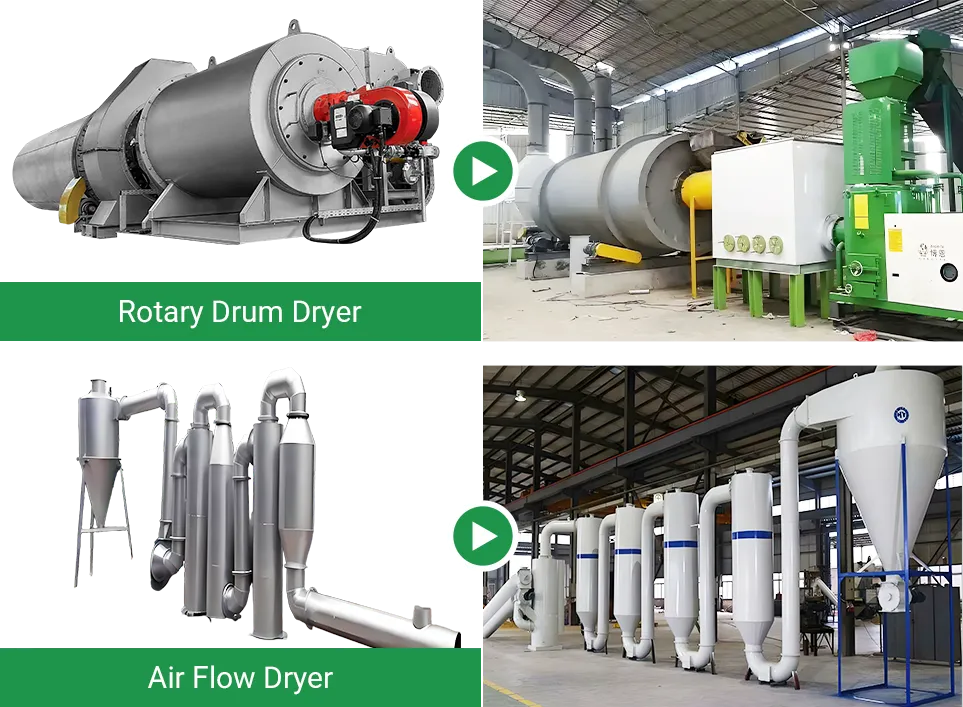
4.Pelletizing
Pelletizing turns dried oak powder into cylindrical pellets under high heat and pressure. This process is usually carried out using a ring die biomass pellet mill. Before entering the mill, the material passes through a magnetic separator to remove any remaining metal particles. This step helps protect the die and reduce fire risk.
Pellet quality depends mainly on the compression ratio and roller settings.
The compression ratio is one of the most critical settings. It refers to the ratio of die hole length to diameter. It depends on both the thickness of the die and the size of the holes. Since oak is a dense hardwood, a higher compression ratio is generally required. A range between 5.5:1 and 7:1 is typically recommended. If the ratio is too low, the pellets may be loose. If it's too high, it may increase energy use and cause excessive wear on the machine.
Most ring die pellet mills have two or three rollers evenly arranged inside the die. These rollers press the material steadily into the die holes. The roller–die gap is typically set between 0.1 and 0.3 mm to allow firm compression while minimizing wear.
During pelletizing, friction raises the temperature to around 80–100°C. This heat softens the lignin in the oak, allowing the material to bind naturally without added binders.
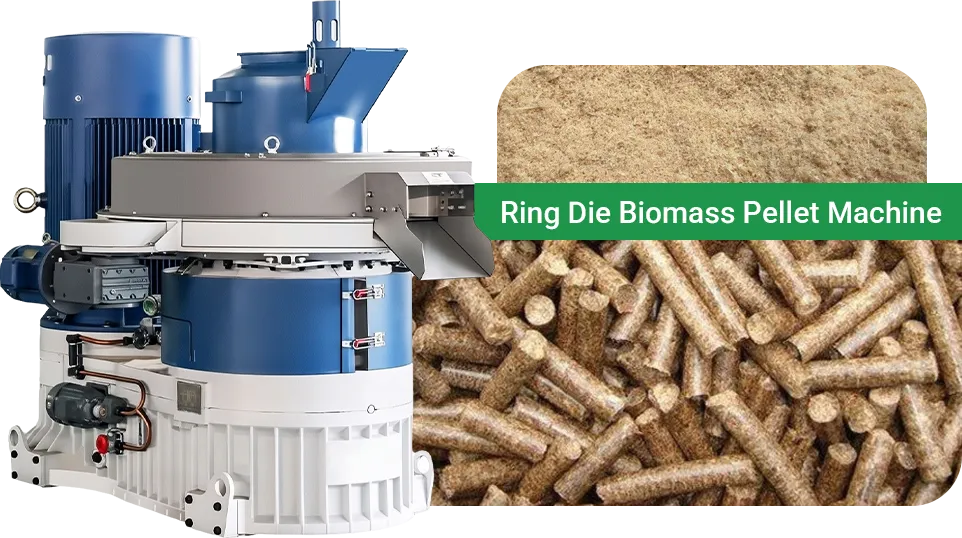
5.Cooling
Freshly made pellets are hot and need to cool down to room temperature. Without proper cooling, they may develop mold or even self-ignite during storage.
Medium and large-scale lines commonly use a counterflow cooler. It draws in ambient air that flows opposite to the hot pellets, allowing quick temperature drop and stable pellet quality. Smaller systems may use natural air drying or a cooling conveyor as a simpler option.
Cooling must be gradual. A sudden drop in temperature can cause cracks in the pellets.
After cooling, the pellet temperature should stay within 5°C of room temperature. Final moisture content is typically kept below 10%, which meets storage and handling standards.
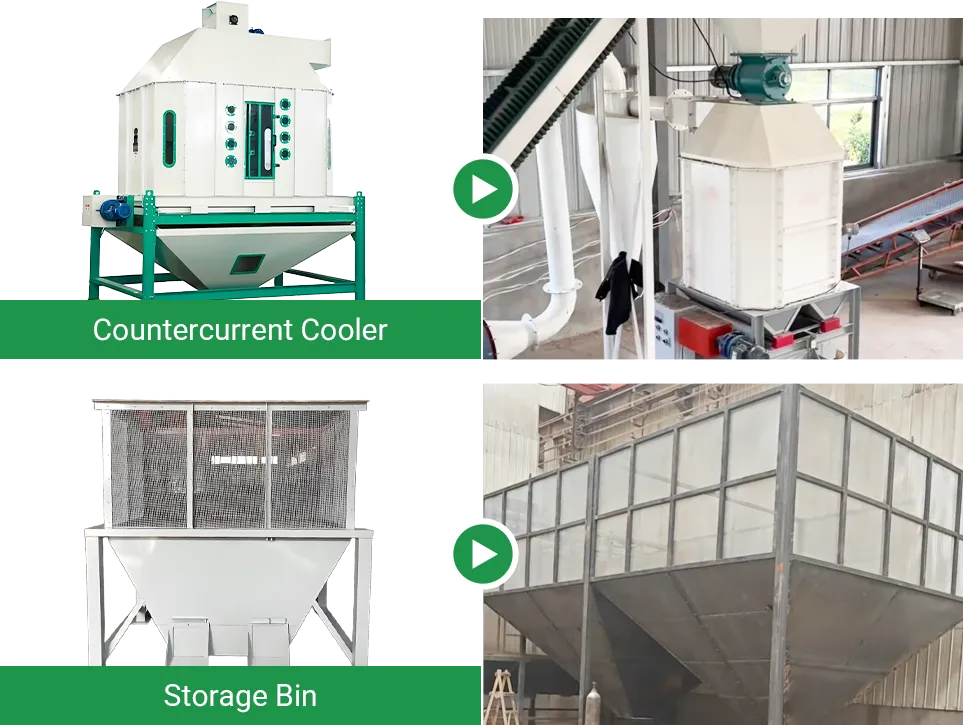
6.Screening
After cooling, the pellets are screened to remove fines and those that don't meet size standards. This helps ensure a consistent and reliable product.
A vibrating screen separates oversized pieces and loose debris. Longer pellets can be crushed and reused or sent back for pelletizing. Fines are returned to the raw material bin, reducing waste.
Well-screened oak pellets should have a uniform size, smooth surface, and good durability.
7.Packaging
Oak pellets can be packaged in bulk or in bags, depending on how they will be delivered.
For bulk handling, pneumatic or screw conveyors are often used to load pellets directly into silos, trucks, or bulk vessels. This method is efficient and cost-saving but requires good pellet durability to minimize dust during transport.
Bagging is usually done with automatic machines that weigh, fill, and seal each bag. In smaller setups, manual tools may be used instead, offering flexibility for different production scales.
While the core production process stays the same, the exact equipment setup can vary based on output capacity, material type, and budget.
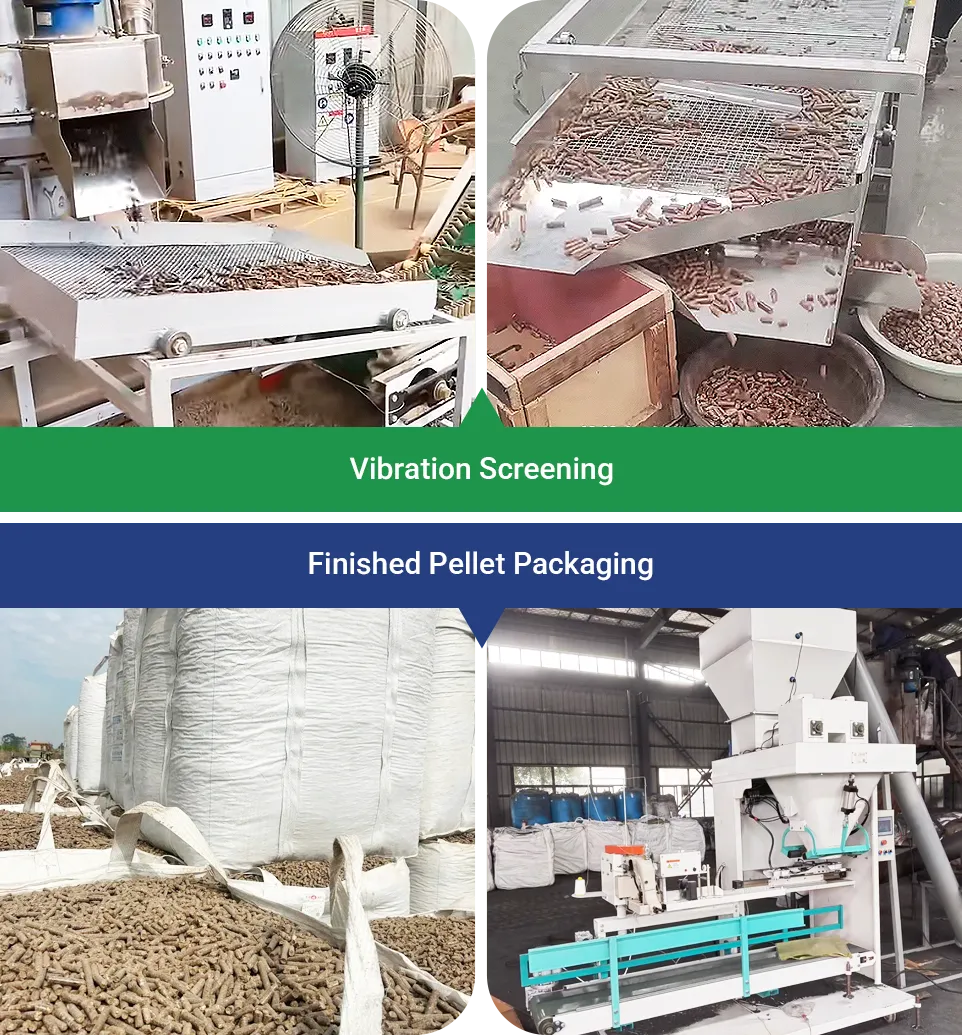
Two Common Setup Options for Different Production Scales
This section introduces two typical configurations: one for large-scale production and one for smaller operations.
Small-Scale Configuration (0.5–1 ton per hour)
A small oak pellet line works well for test production, local heating, or making use of sawmill waste. It often uses sawdust or wood shavings, which already meet size and moisture requirements. A typical setup includes:
| Process | Equipment | Quantity |
| Raw Material Prep | Drum screen | 1 |
| Permanent magnetic separator | 1 | |
| Conveying | Belt conveyor | 1 |
| Crushing | Small hammer mill | 1 |
| Fan | 1 | |
| Cyclone separator | 1 | |
| Conveying | Screw conveyor | 1 |
| Drying | Airflow dryer | 1 |
| Fan | 1 | |
| Cyclone separator | 1 | |
| Conveying | Screw conveyor | 1 |
| Pelletizing | KH-450 ring die biomass pellet mill (0.7–1 t/h) | 1 |
| Magnetic separator | 1 | |
| Conveying | Skirt belt conveyor | 1 |
| Cooling | Cooling conveyor | 1 |
| Buffer Storage | Storage bin | 1 |
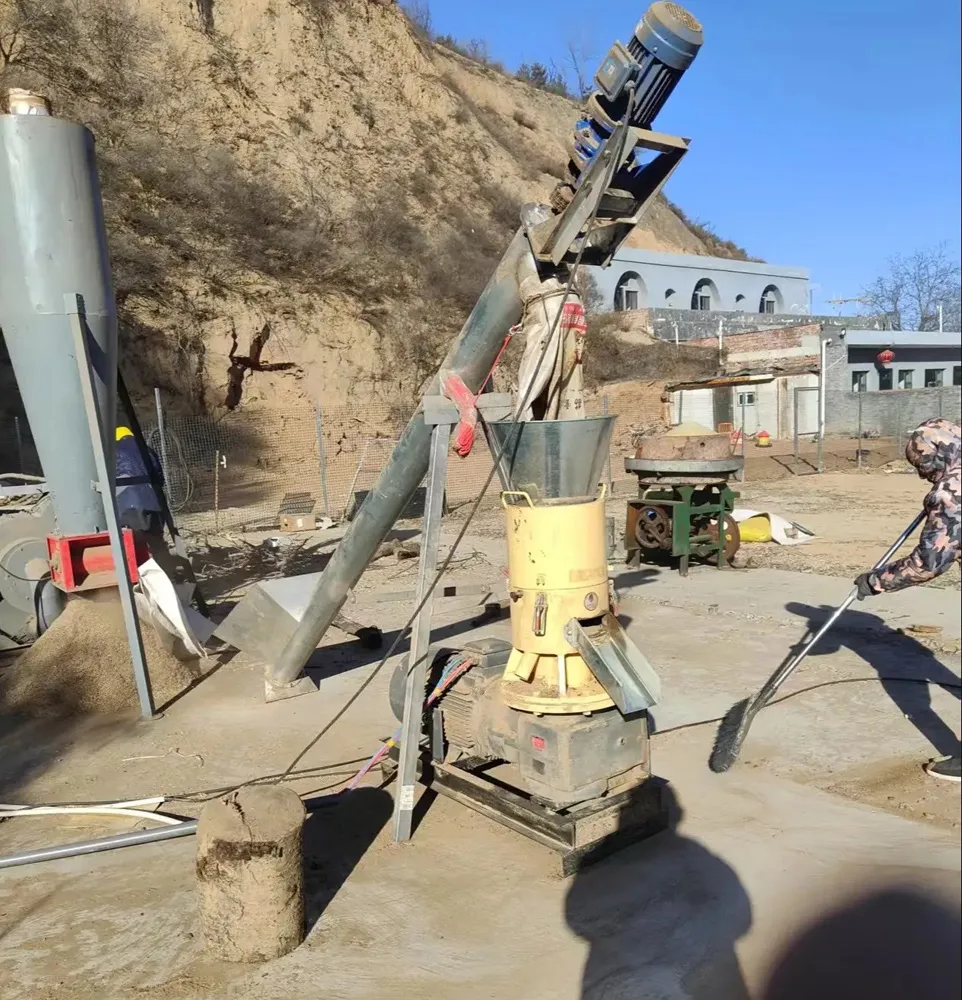
Large-Scale Configuration (3–5 tons per hour)
Large-scale oak pellet lines are often used for industrial heating or export. They run continuously and are built for high output and efficiency. These systems include more advanced equipment and a higher degree of automation. A typical configuration includes:
| Process | Equipment | Quantity |
| Raw Material Prep | Drum screen + permanent magnetic separator | 1 |
| Debarker | 1 | |
| Drum chipper | 1 | |
| Large storage bin | 1 | |
| Conveying | Belt conveyor | 1 |
| Crushing | Heavy-duty chip and shredder combo | 1 |
| High-speed hammer mill | 1 | |
| Fan | 1 | |
| Cyclone + pulse dust collector | 1 | |
| Conveying | Screw conveyor | 1 |
| Drying | Three-pass rotary dryer | 1 |
| Online moisture analyzer | 1 | |
| Cyclone + pulse dust collector | 1 | |
| Conveying | Bucket elevator | 2 |
| Pelletizing | KH-680 ring die biomass pellet mill (1.5–2.5 t/h) | 2 |
| Magnetic separator | 2 | |
| Conveying | Skirt belt conveyor | 2 |
| Cooling & Screening | Counterflow cooling tower | 1 |
| Vibrating screen | 1 | |
| Conveying | Skirt belt conveyor | 1 |
| Buffer Storage | Finished pellet bin | 1 |
| Conveying | Screw conveyor | 1 |
| Packaging | Fully automatic packing machine | 1 |
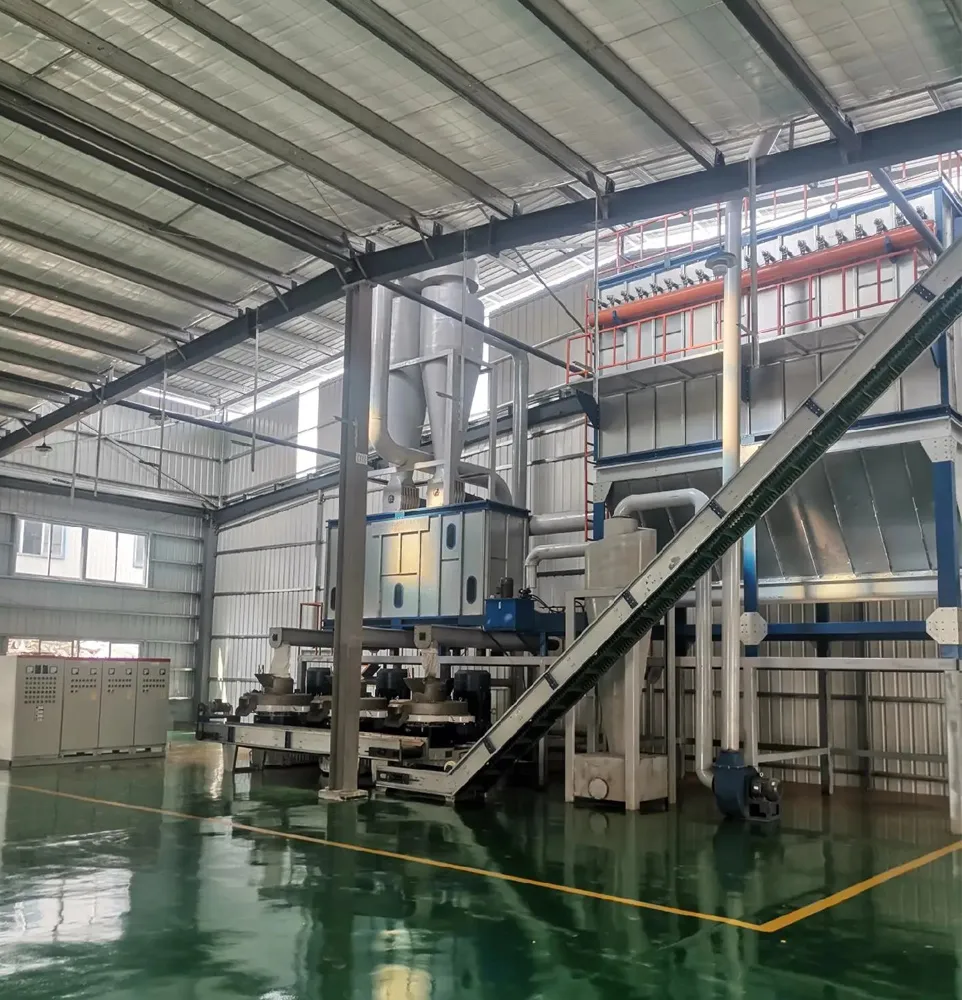
These two configurations are common references, but actual setups may vary depending on production volume, raw materials, and on-site conditions.
We offer one-on-one support to help tailor equipment selection and optimize the production process. Feel free to contact us for a custom solution based on your specific needs!

 Online Contact
Online Contact Send Message
Send Message
Need Some Help?
Contact us quickly and we will reply you within 24 hours. We will not disclose your information.